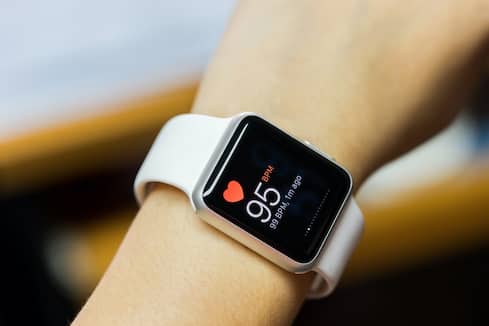Life insurance giant MassMutual is exploring the use of health data from wearables to further refine its data science-created underwriting models.

Your Apple Watch or your FitBit can tell you how many steps you've taken in a day, what your resting heart rate is, and a range of other measurements about your daily habits and how they contribute to your overall health. You can take this information and make positive changes to your habits. Or you can monitor your own progress with goals.
But you aren't the only one who is interested in these data points such as your step count and hours of sleep per night. Just like car insurance companies offer discounts to drivers who allow monitoring of their safe driving habits, health and life insurance companies may one day offer discounts to those who comply with good health habits.
Massachusetts Mutual Life Insurance Company or MassMutual is one of them. This century-plus old company is looking to pioneer the analytics of health data from wearable devices to predict long term mortality risk -- whether someone will die in 20 years or 30 years or more. Those with healthy habits could earn a health discount on their premiums.
Read more about analytics and the enterprise:
Data Science: How the Pandemic Has Affected 10 Popular Jobs
The State of Chatbots: Pandemic Edition
Analytics Salaries Steady Amid COVID Crisis
5 Analytics Mistakes You Need to Avoid
To be clear, this isn't anything the company has put into practice yet in the heavily regulated industry. But it's the direction MassMutual is headed, according to Gareth Ross, head of enterprise technology and customer experience at the company, who spoke to InformationWeek in an interview.
"Over the course of a year if you get great sleep, we will take a percentage off your insurance premium because you are protecting yourself and you are protecting your longevity," he said.

Gareth Ross
But even though MassMutual's work with data from wearable device is not something that's hit the market yet, the company has been working for years with health data and machine learning algorithms to improve its risk assessments.
It only makes sense. A life insurance company makes hundreds of millions of decisions each year about who to provide risk to and at what price, Ross said. It's an ideal environment for the application of data science and advanced analytics. With that in mind about 6 years ago Ross was given the charter to stand up a small data science and advanced analytics practice to look at the possibilities of applying the technology to these risk decisions. He hired a team of 4 or 5 experts -- people with PhDs in computer science or statistics -- during a time when data scientists were among the rarest and most sought-after professionals.
These pros were given some projects and told to build models to see what was possible. Those early models focused on the underwriting, or the hundreds of billions of dollars in risk the company takes on each year in the policies it sells.
"Insurance companies like ours are sitting on gold mines worth of data because we've been around for 100 years," Ross said. "That data is incredibly rich in terms of health indicators such as cholesterol levels, blood pressure, height, weight -- hundreds of data points for every person. The problem was that it was all on paper and in legacy systems."
That meant an early effort of the tiny data science team was to build a 20-year history of all the policy holders and all the data the company had.
"At the end of that we had a data set that we do not believe actually exists elsewhere in the world at that point in time, and probably not today either," Ross said.
No actual numbers are available regarding the return on investment, but the success of the program can probably be measured by the growth of the team over the last 6 years, going from just a few data scientists to about 100 of these highly compensated professionals. There's also Ross's qualitative endorsement.
"The results were just astoundingly strong," he said. Ross's influence within the company has expanded as well to work on more operational matters in addition to the work on the underwriting models.
Ross's team didn't deploy a commercial platform for this work. Rather, they cobbled together their own platform from the rich set of open source technologies available for data science, ones that these data scientists were more accustomed to using in their previous university jobs.
Ross believes that the open source route has provided MassMutual with a number of competitive advantages.
But these advantages, like flexibility and speed, are most likely enjoyed by a small group of big companies that have the money to invest in large data science teams. Smaller companies may be better served by investing in the commercial platforms.
Because MassMutual opted for an open source platform rather than paying for a commercial one, much of the program's budget is spent on compensation for the data scientists.
Yet, it's still not easy to find the data scientist level of talent in the marketplace today.
Finding data scientists
To help with talent recruitment, MassMutual has developed partnerships with universities. For instance, the University of Vermont and the University of Massachusetts, Amherst. Ross said that Amherst has a strong computer and machine learning program, and MassMutual has invested in an academic partnership. The partnership includes a program with the university where MassMutual hires undergrads. But MassMutual also sponsors masters-level coursework at the school that provides those students with a mix of academic and practical experience.
"We've been doing that for about 4 years to build a talent pipeline," Ross said. "It has been incredibly successful for us...We are building our own talent pool for the future."
That will be important in the years to come as MassMutual looks to additional data sets to add even more value to its underwriting models. And that's where your Apple Watch or FitBit comes into play.
About the Author(s)
You May Also Like







